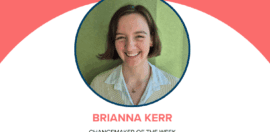A Reflection: Collective Impact in Australia – 12 Months On
11 December 2013 at 10:55 am
Buzz, backbone leadership and data sourcing are the pressing issues as Australian social change advocates Dawn O’Neil AM and Kerry Graham share their reflections on the year that was for Collective Impact.
 |
| Dawn O'Neil AM |
 |
| Kerry Graham |
After just over 12 months of fully immersing ourselves in trying to better understand how we can increase our “Collective Impact in Australia” we have reflected on the year about to end and what’s ahead for 2014.
There is no question that the article published by Mark Kramer and John Kania on Collective Impact has transformed our work.
In summary there are three things that stand out as lessons learned over the past 12 months;
1) Collective Impact requires a shift in mindset
From believing that isolated impact alone can solve ‘wicked’ problems to accepting that we must work collectively to achieve impact. From expecting a ‘quick fix’ or that a new ‘program or project’ is all that is needed when it is clearly understood by those who work in this area that this is long term work – and no 3 year program no matter how good it is can effect significant lasting change.
From needing to ‘own’, and control attribution to oneself or an organisation to being willing to give up autonomy and share attribution. From risk intolerance, to taking smart risks and managing risks better. From having difficulty grappling with the complexity of entrenched disadvantage to accepting the uncertainty and the complexity and learning new ‘emergent’ ways to work with it.
These are just some of the mindset changes needed to achieve lasting impact – and why this is such challenging work requiring creative, flexible, forward thinking leadership.
2) Collective impact requires funders to shift their perspective
Collective Impact requires a fundamental change in how funders see their role, from funding organisations to leading a long-term process of social change and being willing to let communities steer the work and have the nerve to stay for years.
It also recognises that social change emerges from incremental improvements of an entire system over time, not just from a single breakthrough by an individual organisation.
It is no longer enough to fund an innovative solution created by a single non-profit or to build one organisation’s capacity alone. Instead, funders must help create and sustain the common agenda, support quality measurement and reporting systems, and the ‘backbone’ leadership that facilitates cross-sector collaborations to enable change.
One such example of an innovative funder in Australia is a Venture Philanthropy Foundation called Ten20 Foundation. Over the next 10 years, Ten20 Foundation seeks to support collective impact in 20 communities of greatest need throughout Australia for the benefit of children. They seeks to mobilise and aggregate the financial investment, people and other resources to ensure those communities succeed. This is a long-term commitment by a funder and not without its risks, but one that holds out hope for significant and lasting change.
We need more funders that are willing to take these approaches and support long term work. The greatest challenge in Australia is, of course, for our governments to understand how they can come to the collaboration table in a way that supports local decision making, systems thinking and innovation.
3) Collective Impact demands better locally available data
Gaining access to good data collection at a local level is an element in serious need of investment in Australia. In spite of the enormous amounts of data collected (mostly by various governments) in Australia, very few communities have ready access to local, detailed data on issues around social disadvantage. Far too often data is extrapolated from population data – and is very rarely granular enough to allow services to target postcodes or sub population groups.
We must increase our capacity around data collection and then make this data accessible through data visualization and other ways to powerfully communicate the story for change told through data. Data is one of the most powerful levers for change in communities and we must have access to it in simpler forms than we have available today.
In thinking about the past year, we have found that the social services sector in Australia is open to new ideas, keen to learn, improve and innovate. We have been bowled over by how receptive people have been to thinking about the Collective Impact Framework as a possible guide for their work. While there are always a few skeptics in the room – and we need them to question and critique any new thinking – overall, social sector leaders have demonstrated curiosity, openness and a willingness to learn.
From those we have engaged with there is a clear agreement that if we keep working in the same way over the next 10 to 15 years we will likely end up growing homelessness and disadvantage.
People are acknowledging the need to change our approach to tackling entrenched disadvantage to one that works with complexity and applies a systems view over the long term. Working collaboratively across systems and sectors using disciplined processes and data measurement has to be factored into the way we approach this work.
However, we also see that the high level of engagement with the “Collective Impact” framework has a shadowy side – it risks becoming the buzz term of 2013, 2014 and beyond. And like many buzz terms before it, “Collective Impact” risks losing its meaning.
The new forum launched by FSG and the Aspen Institute last week is designed to make sure that the true meaning and value of “Collective Impact” isn’t diluted by time or popularity. The Centre for Social Impact, who launched their new vision for improving social outcomes last week, will also be developing a similar “Collective Impact Practitioners Forum” next year and will continue to link with FSG and others such as the Tamarack Institute and Promise Neighbourhood Institute to connect the Australian social sector to the best possible resources, tools and information to support and inform people committed to applying the Collective Impact approach.
About the authors: Dawn O’Neil AM and Kerry Graham have just undertaken a Collective Impact study tour in the USA on behalf of the Centre for Social Impact. Their vision is to translate Collective Impact into the Australian context.







